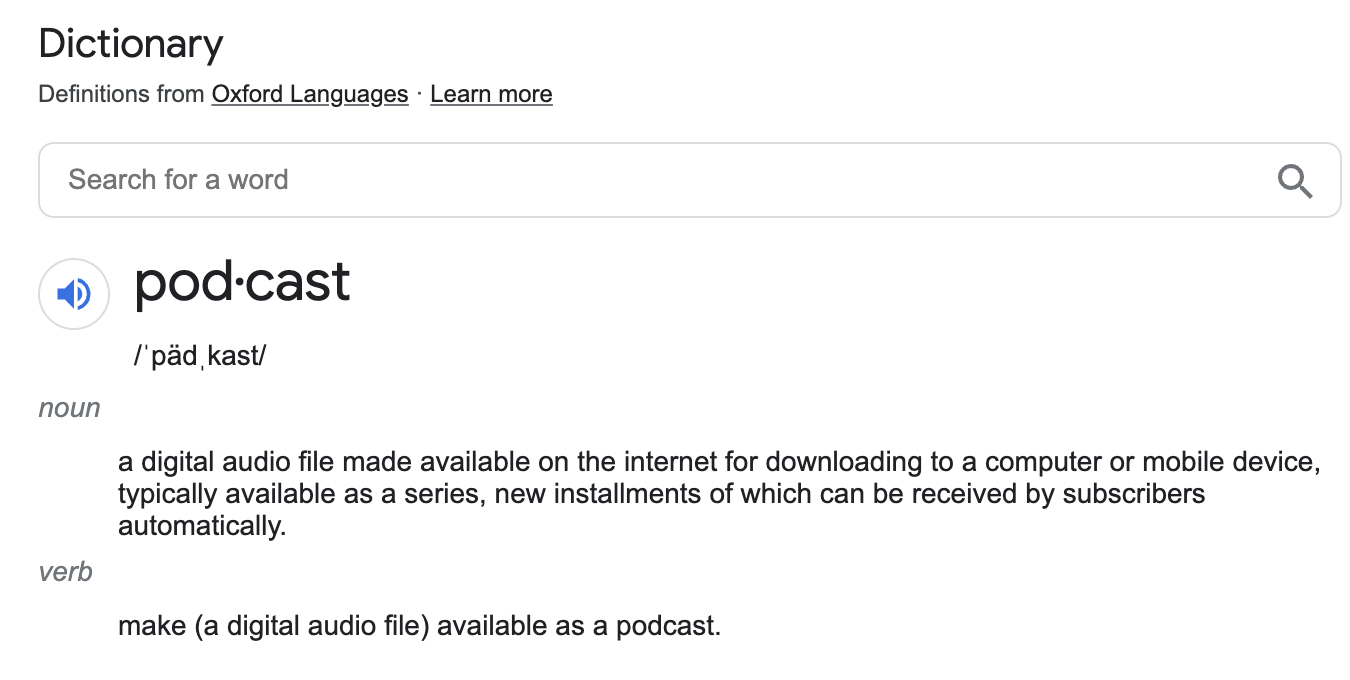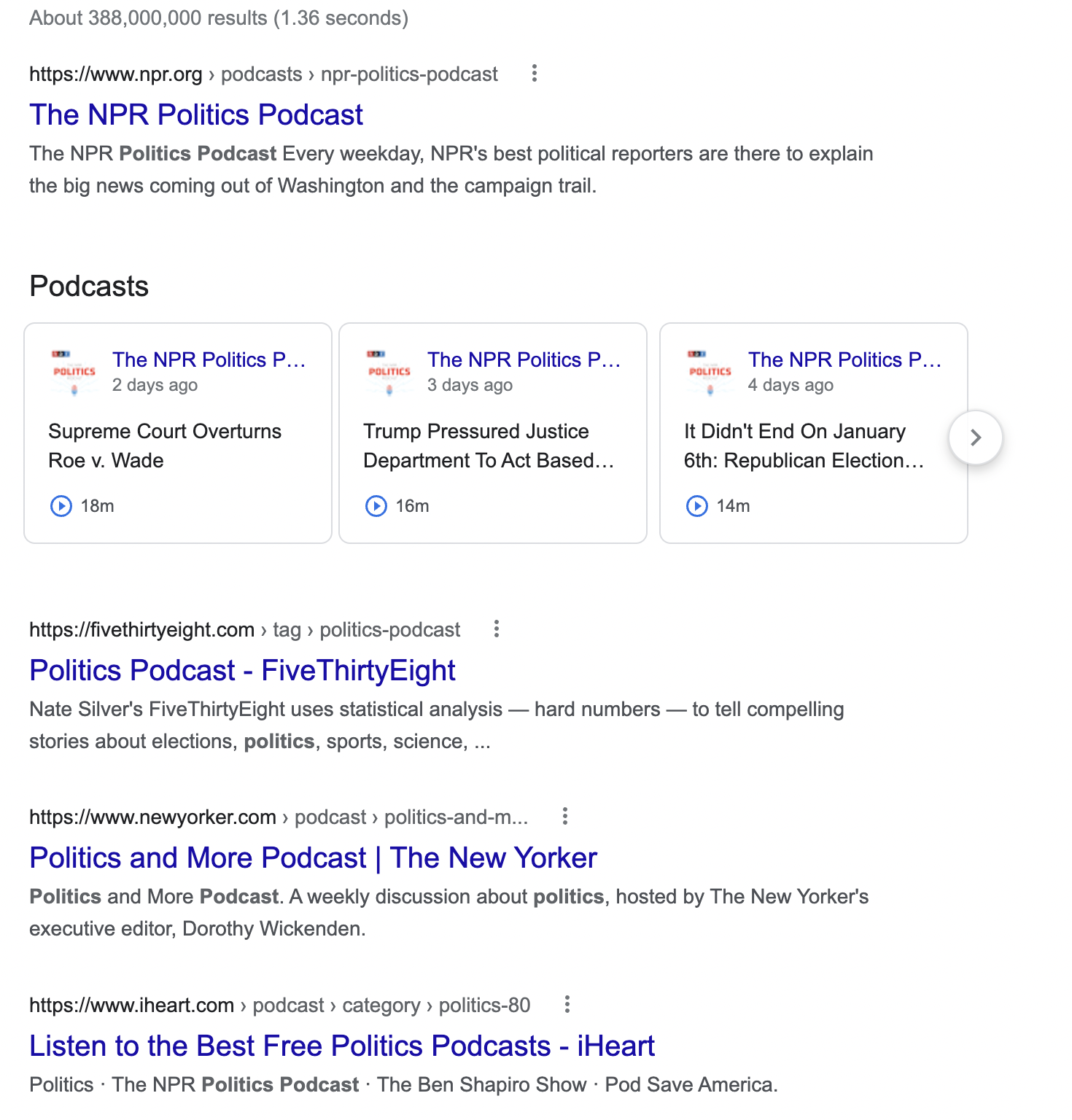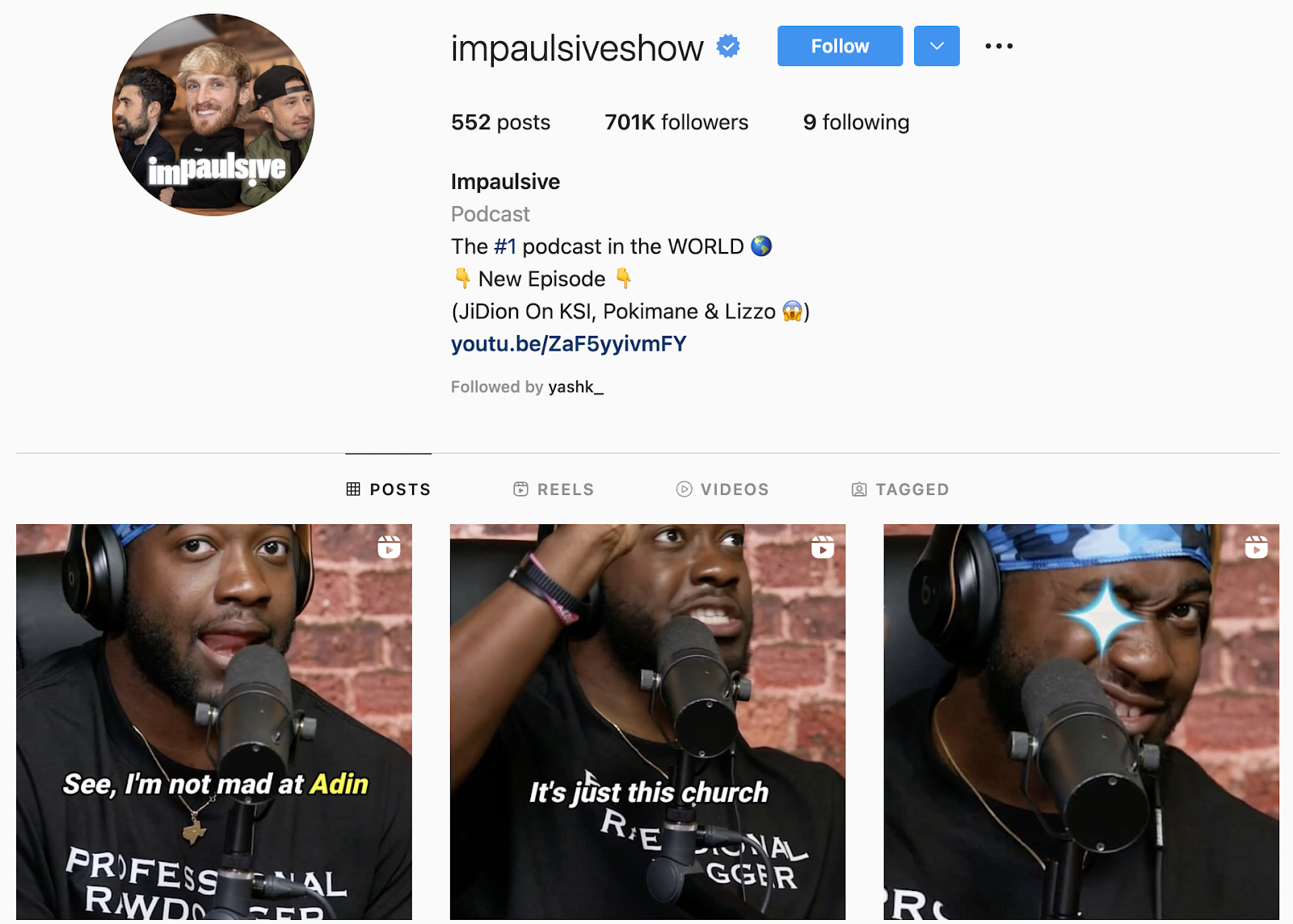Top 13 Podcast Best Practices
Did you know that about 80 million people in America alone listen to podcasts weekly? Podcasts have been the modern way to listen to and consume content regularly.
But when it comes to podcasting, it’s not easy to build an audience, let alone retain them.
In this article, I will walk you through the podcast definition, and the best practices that will make your podcasts successful.
So let’s take it from the top.
What are Podcasts, and Why Should You Have One?
For starters, podcasts are the modern age answer to radios. The dictionary defines it as a digital audio file you can download and listen to at leisure.

Today, podcasts are a lot more than just downloadable radio shows. In the early days, podcasts were just audio files. But with the change in time and technology, many innovative podcasters have embraced video podcasting to engage their audiences for a longer duration.
But why is building a podcast important? You might ask.
According to the 2021 Infinite Dial Study, 28% of the U.S. population over 12 years of age listens to podcasts weekly.
In today’s world, every debatable topic like marketing, technology, history has a podcast with tons of episodes. What’s more, they’re easily accessible as well.
Want to know what your country’s politicians are up to? Just Google ‘politics podcast,’ and you will see a bunch of podcasts that discuss politics.

Let’s take The NPR Politics Podcast as an example. The podcast brings you to a roundtable discussion with National Public Radio Journalists. It excites curiosity among its listeners and ranks among the most popular podcasts.
Now that you know the basics, let’s discuss podcast best practices you should follow to grow it in no time.
13 Podcast Best Practices Everyone Should Follow
1. Have a Consistent Publishing Schedule
Let’s face it; no one becomes rich and successful overnight. It takes dedication, hard work, and consistency. The same is the case with podcasts.
You need to put in hours to write, record, and edit podcasts.
The process might feel overwhelming over time, but once your channel gains traction, it will become easy to grow.
You can start with planning and creating a publishing schedule. It can be daily, weekly, monthly, or bi-weekly, it’s up to you. But be consistent.
Speaking of frequency, you might wonder, how often should you release podcasts?
Short answer - there’s no set number of podcasts you should release weekly or monthly.
Long answer - it depends on the niche you’re in.
Let me explain how:
- Daily: Publish daily if your podcast topic changes constantly. This might cover topics like current events, world news, or trending topics. Publish 15-30 minutes per podcast five days a week.
- Weekly: Best if you have an interview-style or storytelling-type podcast. Make each podcast episode over 30 minutes, and try getting the listeners excited for the next week’s podcast.
- Bi-Weekly: Podcasts that revolve around sports news, education, or health prefer publishing podcasts biweekly. Biweekly publishing is a semi-regular frequency but gives you ample time to analyze your target audience and publish high-quality podcasts.
- Monthly: This could be a good idea if you’re bringing along a guest who’s an expert in the topic you will be talking about. Try making the episode 60 to 90 minutes long by deep diving into it and discussing every possible scenario.
💡 Pro Tip: At the end of your podcast episode, make sure you tell your listeners when you will be publishing the next episode. This will help them reserve a time slot from their busy schedule.
2. Do a Few Trial Runs Before Publishing
After putting in hours of effort into writing and shooting a podcast, you might think everything’s good to go. But here’s the catch.
Even savvy editors tend to miss out on minute details or what we can call blunders. These blunders can annoy your audience. So what to do?
One of the podcast best practices is to perform a few post-production trial runs of your podcast. Listen to the podcast yourself, or make your family and friends listen to it.
This helps you understand what everyone thinks of the podcast you create and gives you unique angles to think about.
💡 Pro Tip: While doing a trial run, search for glitches, fumbling, poor pronunciation, and the overall flow of the conversation.
3. Don’t Hesitate to Invest in Good Equipment
When recording podcasts, investing in quality equipment is never a bad idea.
I’m not suggesting you buy a $3000 mic right off the bat. But take time to choose a product whose performance is at least above average.
You can even make a podcast with your smartphone. It’s great to start with, but eventually, you will have to invest in good equipment.
The podcasting equipment generally includes:
- A microphone
- Noise-cancellation headphones
- Recording and mixing software
No matter how great your content is, with millions of options in hand, people won’t listen to a podcast with poor audio quality.
4. Try Calling Guests on Your Podcast
One of the best ways to organically grow your podcast and boost your online presence is by inviting guest speakers.
Fortunately, inviting a guest today is just an email away. Find potential guests in or outside your network. Create and send an email to them outlining three major questions:
- What’s the podcast about?
- Why are they being invited?
- How long does the podcast last?
Inviting guest speakers ensures that people listen to your podcast as a part of the conversation and not just as an audience.
💡 Pro Tip: Make a proper podcast strategy about what your next 3 to 4 episodes will be about. Pick your guests accordingly, and know their availability beforehand.
5. Leverage Social Media the Right Way
A successful podcast is the by-product of quality content and extensive marketing.
Making your podcast stand out is tough with over 5 million podcasts on iTunes.
But that’s where social media comes into play.
A social media video generates 1200% more shares when compared to text and image-based posts.
Social media is a great platform to market your podcast. To begin with, you need to figure out the right platform where your audience resides.
Then, here’re a few ways to leverage social media to your advantage:
-
Host guests, leverage their names, and connect with their audience
-
Share your episodes to the right social networks
-
Share new episodes (and previews) to your personal social media channel
-
Run contests or giveaways
-
Try doing live podcasts on social media
-
Share quotes and short clips from your shows
-
Use the right hashtags
-
Connect with the right people
Many known personalities leverage social media channels like Instagram to promote their podcasts. Check out impaulsiveshow on Instagram - a podcast by Logan Paul.

6. Ask for Feedback and Reviews
Feedback and reviews can be both sweet and sour. But that shouldn’t matter. Instead, it would help to appreciate your listeners' constructive feedback.
Feedbacks help you understand how well your listeners resonate with your podcast.
Although it’s challenging to get feedback and reviews, here’re a few ways which might ease the process:
- Add Strong CTAs: Put an effective call-to-action at the beginning or end of the podcast, asking your listeners to share reviews and feedback.
- Create a Vanity Link: A vanity link is a short link that redirects your listeners to the review page. You can easily share this link in the podcast description or on social media platforms.
- Rewards-for-Reviews: Reward your customers for sharing reviews so that more and more listeners share what they think about your podcast.
- Guest Reviews: Ask your guests to give a detailed review. They are the ones who have been on your show and seen the working inside out.
7. Have a Proper Podcast Format and Length
Podcast lengths range from 15 minutes to 2 hours. But what’s the ideal length for your podcasts?
Again, there’s no set length for a podcast; it depends on the topic and the kind of content you curate.
If you have 20 minutes of good content that hooks your audience, covers everything, and delivers value, then 20 minutes is your ideal time.
Consistency is the key. Loyal listeners will expect your podcast episodes to be within a specific time frame.
It helps in avoiding the guesswork for your listeners. The more they know your podcast time and length, the better they’ll be able to budget their listening time.
Next in line is the podcast format.
To begin with, try experimenting with multiple formats based on your listeners' feedback and reviews.
Here are the major types of podcast formats you can try out:
- Guest interview
- Solo or Monologue
- Conversation or Co-hosted
- Panel
- Storytelling
💡 Pro Tip: Once you’ve identified which format your audience likes, double down on it and stick to it in the long run.
8. Create a Strong Intro and Outro
A strong intro is essential to hook your listeners, while a strong outro persuades listeners to take the desired action.
To prevent mistakes and errors during recording, write your intro and outros beforehand.
Apart from this, here are some tips for creating a catchy intro:
-
Creatively describe your podcast summary with a catchy tagline
-
Choose the right music and set the right tone right from the start
-
Introduce your podcast and the hosts (if any)
-
Be concise and crisp
Remember, you only have 5 minutes to hook your listeners into hearing you through. So use these 5 minutes well.
Outros are a powerful asset to:
-
Turn your new listeners into subscribers
-
Share next podcast information
-
Persuade listeners to take the action you desire (like, share, subscribe, review)
9. Have a Proper Website for Your Podcast
Consider your website as the treasure house for podcasts.
It’s where all information surrounding your podcast will be present, including notes, host descriptions, transcripts, episode descriptions, and much more.
Try dedicating specific landing pages for every episode you make.
Your landing pages will be the hotspot to hook your listeners, describe what’s in it for them, and excite them to subscribe.
Podfan can help you create a free podcast website to promote your podcast and get more listeners.
10. Best Practices to Follow while Recording an Episode
First and foremost, find a unique and compelling niche to launch your podcast and build topical authority.
Next, choose a pillar topic from that niche and divide its subtopics into episodes.
📝 Note: Ensure your pillar content is comprehensive enough to pull out 3 to 5 subtopics that can later be individual episodes.
After that, research your target audience. Ensure that your audience is curious about the topic and their interest lies in listening to your podcast.
Then, after defining your niche and your audience, start with the scripting, recording, and testing. While writing the script, make sure to maintain a friendly tone.
Lastly, invest in quality equipment to provide an entertaining experience to your listeners.
11. Polish the audio and distribute your content.
Once you’re done with your recording, use powerful editing software to enhance your overall podcast quality.
As we discussed earlier, social media is the powerhouse to drive traffic to your podcast.
So, leverage social media platforms to spread the word - collaborate with influencers, share podcast links, and create interactive contests.
One other thing you can do is, create a blog page in your podcast’s niche and try growing it organically. When you get significant traffic, the blog will help you get a boat-load of listeners like clockwork.
12. Promote your show
Over the years, advertising and marketing in general has evolved. It was easy to go to a few platforms and talk about what you wanted to promote a few years ago.
These days, it’s getting harder and harder to attract attention on the Internet.
Choosing the right marketing strategy would usually depend on your audience, the category of your podcast, how you want to position yourself, and more.
Use value-based marketing to promote your podcast and subtly integrate your presence.
Here’s a list of platforms where you can publish your podcast to start promoting it. Remember, it is important to understand each platform where you are promoting your content.
13. Follow podcast branding best practices
Podcast branding is important. People identify your business with the design of your content. It’s how you present and market yourself.
You’ll use it everywhere-on social channels, in your content, on your website, or in your podcast listings.
The goal is to create the podcast brand people will remember. You should avoid clichés, communicate your message, and capture attention.
If you are serious about building successful podcast branding, follow our Ultimate Guide to Design your Podcast.
Wrapping Up
Starting a podcast is easy, but growing it from 0 to 100k listeners is a tough nut to crack. You must consistently publish high-quality content and try your best to retain your listeners.
I hope these podcast best practices mentioned above will help you scale your podcast and hook your audience right till the end.
Follow this advice and provide people with the content they want.
Growth your podcast with Podfan
Create a free podcast website, and monetize your show via donations & memberships.
Create your podcast page- free of charge
- 1-minute setup